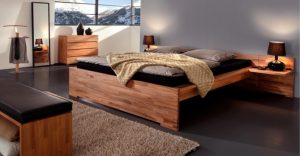Uncategorized
The Psychology of Smooth Lines in Design
 “The tyranny of the line has become absolute. A straight line is something cowardly, drawn along the line, without emotions and thoughts; it is a line that does not exist in nature … Any design based on a straight line will be stillborn ”- Hundertwasser.
“The tyranny of the line has become absolute. A straight line is something cowardly, drawn along the line, without emotions and thoughts; it is a line that does not exist in nature … Any design based on a straight line will be stillborn ”- Hundertwasser.
The psychology of smooth lines in design. The shapes, lines, sizes of objects and objects around us play a much larger role in our life than we think. Many people believe that the rounded shape of the furniture, the bends of the facades, the multi-level surfaces of the ceilings are just a way to decorate objects, and you can completely do without all this decoration. But it is not so.
Simple rectangular shapes of rooms, furniture with sharp corners, as a rule, are more functional. Continue reading
Benefit, Strength, Beauty
 Even in the first century BC, the ancient Roman architect Virtuvius formulated these simple rules, expressed in just three words – benefit, strength, beauty. It is these three concepts that are the basis of all architecture, both ancient and modern. For interior design, which is inextricably linked with architecture, they are also crucial.
Even in the first century BC, the ancient Roman architect Virtuvius formulated these simple rules, expressed in just three words – benefit, strength, beauty. It is these three concepts that are the basis of all architecture, both ancient and modern. For interior design, which is inextricably linked with architecture, they are also crucial.
What is so important in these words that are familiar to everyone? These three words, or rather their sequence, are the most important rules for the design of interior design. Their sequence unambiguously indicates what is of primary importance and what is secondary in design. Continue reading
Table history
 Ordinary table: a rectangular board on four legs from time immemorial served the person.
Ordinary table: a rectangular board on four legs from time immemorial served the person.
The simplest were the feasting tables – roughly knocked together boards set up on goats. Both princes and their squads and ordinary people feasted at such tables. I must say that in our time for large village weddings, which are celebrated in the courtyard in the summer and early autumn, they make the same banquet tables.
2 In miniatures of the Old Russian annals, Nestor, the chronicler, is depicted at the table for “knee writing.” These desks were not high, and their upper board was at the level of the writing knee. In addition, they were equipped with music stands. The parchment on which they wrote lay on its knees, and on the table itself there was everything necessary: inkwells, feathers, rulers, knives for cutting sheets and sharpening feathers.
Then tables appeared that looked like a chest: with low legs, with a lifting tabletop, under which there were many compartments and small drawers. Continue reading




